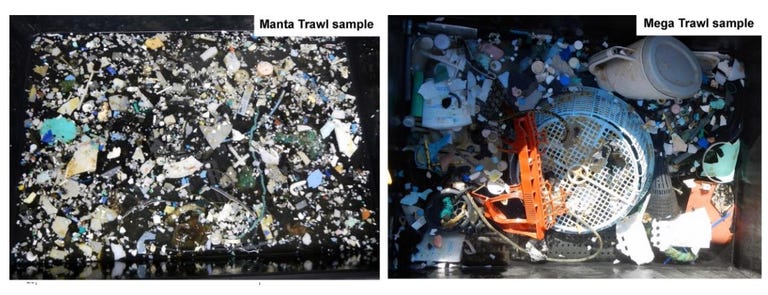The Great Pacific Garbage Patch is 16 Times Bigger Than Thought
And it's growing by the day.
By John Wenz
The Ocean Cleanup Foundation
The Great Pacific Garbage Patch, an accumulated mass of trash in the ocean, is 16 times bigger than we once thought—and it's not getting smaller.
According to research published today in Scientific Reports, the giant mass may be up to 46 percent fishing nets as well. The findings have big implications for marine life, as plastic particles in the patch of waste can break down and contaminate the ocean's food chain.
Though often thought of as a mass of plastic, the researchers also reported glass, wood, rubber, tar, and other materials in the Garbage Patch. A large portion of the trash appeared to be refuse from the commercial fishing industry.
The Great Pacific Garbage Patch is an accumulation of—you guessed it—trash that moves into a cyclic current of ocean running roughly between California and Japan, surrounding the Hawaiian islands. Due to the nature of the ocean current, or gyre, trash flows into the area, but it never moves out. Over time, the process has accumulated into a massive "colony" of garbage. The massive accumulation of human litter was first discovered in the 1980s, and it has continued to grow ever since.
The study reports that 352 million tons of trash have accumulated in the patch. Researchers from The Ocean Cleanup Foundation and other institutions counted trash within the patch, sorting it by size. Data from aerial flyovers of the patch in a C-130 Hercules helped generate more accurate estimates of its total mass and volume. The researchers also believe there may be even more garbage hiding below the surface of the ocean.
In the future, satellite data could be used to refine estimates for the size of the patch and measure how much more trash it accumulates every year. One thing is clear, however—the Great Pacific Garbage Patch is a big problem that is only getting bigger.
No comments:
Post a Comment